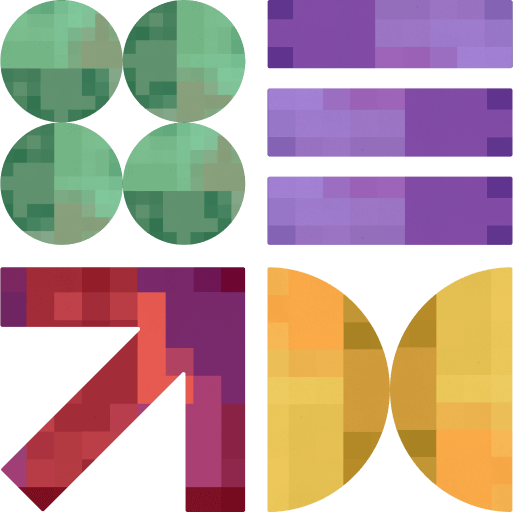MEAN Stack vs MERN Stack – A Practical Guide for Your Next Project

If cloud app development is on your to-do list, you’ll have to make a choice between MEAN and MERN stacks.
Both of these powerful tech stacks are listed among the most popular choices for building modern web applications. They offer a robust, full-stack development environment that covers everything from database to frontend. Plus, they’re scalable, fast, and cloud-ready.
The question is, which of these is right for your next project?
To answer that, you’ll need to thoroughly explore MEAN stack vs MERN stack.
💡 Still on the fence about cloud apps? Cloud native app development is a smarter, more scalable way to build digital products for your business. By designing apps specifically for the cloud from the ground up, you gain benefits like faster deployments, resilience to failure, and lower infrastructure costs. Now is the time to start treating cloud as the foundation of how modern apps should be built.
What is MERN Stack Development?
Starting off with MERN, this acronym represents the following set of technologies –
- M – MongoDB – This is A NoSQL database that stores data in flexible, JSON-like documents.
- E – Express.js – Used for handling routing, APIs, and backend logic, Express.js is a lightweight web framework for Node.js.
- R – React.js – Developed by Facebook, React.js is a powerful frontend library that’s used for building interactive user interfaces.
- N – Node.js – Node.js is a JavaScript runtime that allows you to run JavaScript on the server side.
Together, these can be used to create admin dashboards, single-page applications (SPAs), eCommerce sites, and real-time collaboration tools.
💡 To really make the best decision when it comes to MEAN stack vs MERN stack, you should dig a little deeper into each tech stack. And if you’re leaning toward MERN right now, you should be aware of all the benefits you can get as well as the limitations you may face while working with MERN stack development services.
The popularity of this tech stack is growing in Saudi Arabia, especially in Riyadh and Jeddah. This is proven by the growing demand for skilled MERN developers and the rising number of scalable and efficient web applications launched by firms there.
So, what makes MERN such a popular option? Here are some reasons –
- Unified Language – MERN uses JavaScript across the entire development cycle. Having a single language ensures smoother collaboration and faster development.
- Component-Based UI – Thanks to React.js, building and managing complex user interfaces is very easy.
- Scalable Backend -Developers absolutely adore how Node.js and Express handle high loads with minimal overhead.
- Flexible Data Handling – With MongoDB in the mix, data can be stored in a JSON-like format. This makes it easy to work with in JavaScript.
What You Get by Hiring a MEAN Developer
Like MERN, MEAN is an acronym for the following technologies of this stack –
- M – MongoDB
- E – Express.js
- A – Angular
- N – Node.js
The sixth most used web framework after Node and Express, Angular is a TypeScript-based framework developed and maintained by Google. Unlike simple UI libraries, it comes packed with tools for building scalable, maintainable, and high-performance web applications.
Together, these technologies can create enterprise dashboards and portals, real-time applications, learning management systems, content management systems, and CRMs. And here’s how –
- Angular handles the frontend UI, delivering a single-page application (SPA) experience with rich interactivity.
- Express.js and Node.js manage the backend by handling routes, logic, and communication with the database.
- MongoDB stores and retrieves data, using a flexible schema that integrates naturally with JavaScript-based applications.
Now, like MERN, MEAN is widely popular, but for a different set of reasons –
- High Performance – Thanks to Node.js, developers can create apps that feature fast, non-blocking backend operations.
- Structured Frontend – Angular offers a well-organized, component-based framework that’s ideal for large-scale applications.
- Flexible Data Handling – MongoDB’s document-oriented database structure works naturally with JavaScript objects.
- Strong Community Support – All MEAN technologies are open-source and widely supported. In fact, GitHub statistics show that they have millions of repositories and contributors on the platform.
Comparing MEAN Stack vs MERN Stack
With formal introductions out of the way, it’s time to compare both stacks so that you can make the right decision for your next project.
Frontend Technology
The main difference between MEAN and MERN lies in the frontend technology. MEAN uses Angular, while MERN uses React.
Angular is a full-fledged framework that comes with everything needed to build scalable frontends including routing, forms, and state management.
On the other hand, React is a lightweight, unopinionated JavaScript library focused on building UI components. It’s more flexible than Angular and easier to use while customizing stacks.
Architecture
Angular in MEAN follows a structured Model-View-Controller (MVC) architecture. This promotes organized code and is ideal for large-scale enterprise projects.
In contrast, React in MERN is based on a component-based architecture, which is more modular and flexible. Developers can build isolated UI components and assemble them like building blocks. This is especially helpful in fast-moving projects or when working with micro frontends.
Data Binding
Another point to compare MEAN stack vs MERN stack is data binding, i.e., the process of connecting the data in your application to the user interface.
In MEAN, Angular supports two-way data binding. So, changes in the UI automatically update the data model and vice versa. While this simplifies form handling, it may introduce complexity in performance-heavy applications.
As for MERN, React implements one-way data binding. This means data flows in a single direction, an approach that gives developers more control over how data is managed. It’s also generally preferred as it ensures better performance and debugging.
Performance
Both stacks are capable of high performance, but MERN may have a slight edge due to its DOM mechanism.
The DOM (Document Object Model) is a programming interface that represents a web page’s structure as a tree of objects. Through it, developers access, modify, or delete HTML and CSS elements dynamically. It also supports interactive features like animations and real-time updates.
MERN uses a virtual DOM, i.e., a lightweight, in-memory representation of the real DOM used by libraries like React. It updates only the parts of the UI that change, rather than reloading the entire page.
As a result, MERN apps feature better performance and efficiency. This is especially true for dynamic web applications with frequent user interactions. That said, you should know that React relies on manual optimization or third-party tools.
Meanwhile, Angular uses the real DOM. This can make large applications slower unless they’re carefully optimized. And that’s not a difficult task considering there are many tools to enhance performance out of the box.
Scalability
When comparing MEAN stack vs MERN stack, scalability may seem equal for both tech stacks. However, they achieve this differently.
Thanks to Angular, MEAN offers built-in scalability features like modules, services, and strong typing with TypeScript. Meanwhile, React leans more on the developer’s architecture decisions.
That’s why MEAN is more suitable for enterprise-grade applications with complex business logic. And why MERN’s flexibility is better suited for both startups and large systems.
Community and Ecosystem
React, and therefore MERN, enjoys a massive and highly active open-source community. So, you get to benefit from frequent updates and a vast ecosystem of third-party libraries. There’s also the added bonus of choosing your tools.
As for Angular/MEAN, it has a strong following, particularly in the enterprise space, and benefits from official support by Google. So, this option will ensure a more complete solution out of the box.
Testing Support
Testing is well-supported in both stacks, but the experience differs.
Angular comes with built-in tools like Karma, Jasmine, and Protractor. These make it easy to set up a comprehensive testing environment.
Meanwhile, React relies on external tools such as Jest, Enzyme, or React Testing Library. While this gives you more flexibility, you’ll need to spend more time on configuration.
Customization
Last on this MEAN stack vs MERN stack comparison is the level of customization.
If your team prefers flexibility and control, MERN is the better choice. React is unopinionated, so developers can structure the app as they see fit, and choose libraries that suit specific needs.
But with MEAN, Angular enforces best practices through its opinionated structure. That’s why this stack is ideal for larger teams that need consistency across projects and contributors.
Should Your Next App be a MEAN or MERN Stack Project?
If you still can’t decide, use the following tips to guide your choice.
- Factor Your Frontend Requirements in Your Decision – Choose MEAN if you need a structured, feature-rich frontend with built-in solutions for forms, testing, etc. MERN will be a better choice if you want a flexible, component-driven UI and full control over the frontend stack.
- Consider Your Project Size and Complexity – Use MEAN for enterprise-grade apps that benefit from structure, scalability, and maintainability. On the other hand, use MERN for agile, fast-moving projects, MVPs, or SPAs where UI responsiveness and speed are must-haves.
- Decide on Your Performance Requirements – MERN has a performance edge when used for apps with high-frequency UI updates. On the other hand, MEAN’s real DOM make it suitable for apps where data changes are more structured and predictable.
- Crunch the Numbers – MERN can be more cost-effective due to its faster development cycle and simpler learning curve. Meanwhile, MEAN may cost more upfront. That said, it can pay off long-term with better structure and maintainability in large-scale projects.
A reliable, experienced tech partner can further ensure that you make the best decision for your app. So, make sure to consult with your chosen company and bounce ideas off its experts.
💡 Whether you choose a MEAN or MERN stack development company, look for a company that goes beyond building apps and understands cloud-native architecture, scalability, and DevOps. Any mistakes you make while choosing bespoke software development services will rob you of benefits like clean code and modular components. And you’ll end up with applications that aren’t future-ready or cloud-optimized.
For MEAN, MERN, or Both, DPL Can Help
We can help you make up your mind about MEAN stack vs MERN stack simply because we have ample experience and expertise in both tech stacks. Our work with different clients across various industry verticals further adds value to our services.
Let us know how we can help via the form below, and trust that your next project is in the best of hands.





